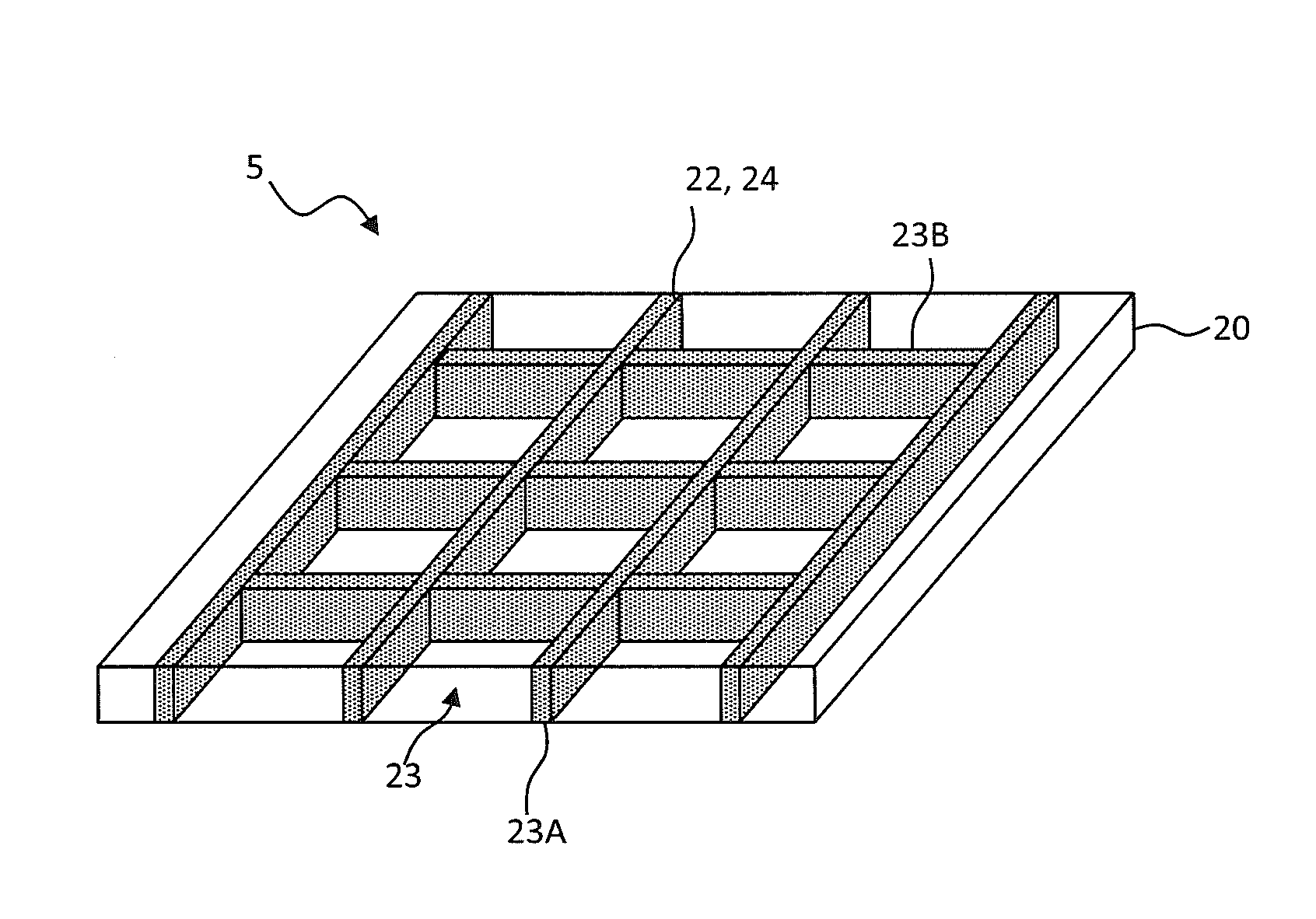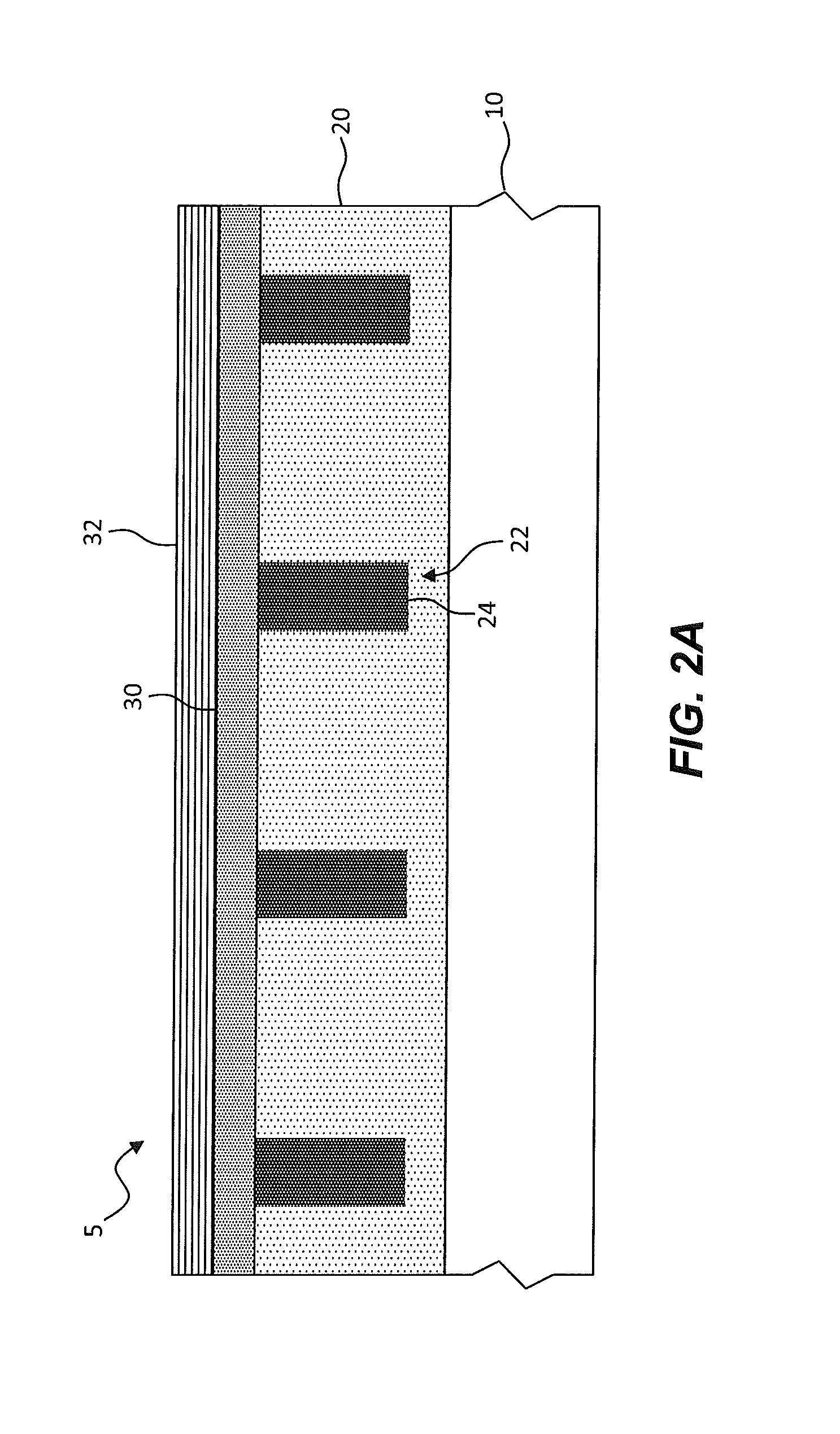Imprinted micro-louver structure method
a micro-louver and structure technology, applied in the field of micro-louver structures, can solve the problems of difficult to make large micro-louver sheets, difficult to achieve large-scale micro-louver sheets, and limited methods in the depth they can achieve, etc., to achieve the effect of improving transparency, reducing viewing angle, weight, thickness and cos
- Summary
- Abstract
- Description
- Claims
- Application Information
AI Technical Summary
Benefits of technology
Problems solved by technology
Method used
Image
Examples
Embodiment Construction
[0032]The present invention is directed to micro-louvers formed in sheets. In an embodiment of the present invention illustrated in FIG. 1, a micro-louver structure 5 includes a cured layer 20 on a surface 15, for example the surface 15 of a substrate 10. The cured layer 20 has a plurality of imprinted micro-channels 22 forming a pattern in the cured layer 20. The imprinted micro-channels 22 have a greater depth D than a width W and are spaced apart by a separation distance S greater than the width W of the imprinted micro-channel 22. A cured light-absorbing material 24 is located in the imprinted micro-channels 22. The cured light-absorbing material 24 in the imprinted micro-channels 22 form micro-louvers 23 in the micro-louver sheet 12 including the cured layer 20.
[0033]In an embodiment, the cured layer 20 is formed on the surface 15 of the substrate 10. In another embodiment, the imprinted micro-channels 22 and the cured light-absorbing material 24 extend only partially through t...
PUM
| Property | Measurement | Unit |
|---|---|---|
| width | aaaaa | aaaaa |
| width | aaaaa | aaaaa |
| width | aaaaa | aaaaa |
Abstract
Description
Claims
Application Information
 Login to View More
Login to View More - R&D
- Intellectual Property
- Life Sciences
- Materials
- Tech Scout
- Unparalleled Data Quality
- Higher Quality Content
- 60% Fewer Hallucinations
Browse by: Latest US Patents, China's latest patents, Technical Efficacy Thesaurus, Application Domain, Technology Topic, Popular Technical Reports.
© 2025 PatSnap. All rights reserved.Legal|Privacy policy|Modern Slavery Act Transparency Statement|Sitemap|About US| Contact US: help@patsnap.com



